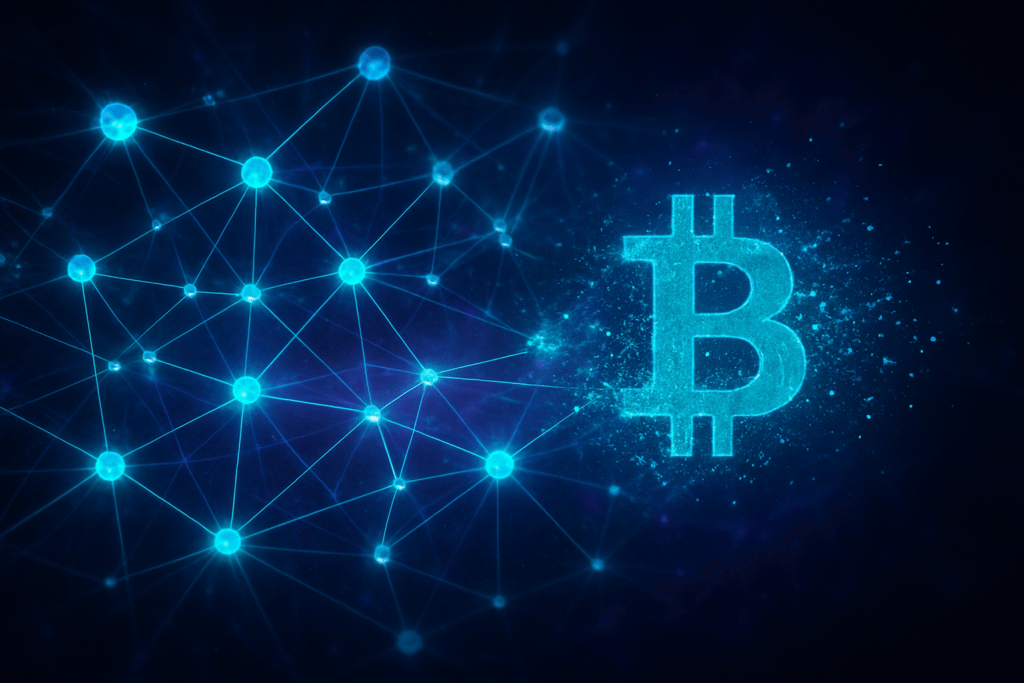
The digital world is bracing for a seismic shift as warnings intensify that quantum computing could compromise Bitcoin's fundamental cryptography within the next 15 years. This isn't a distant science fiction scenario but a tangible threat, acknowledged by leading experts and institutions, that could unravel the security bedrock of the world's largest cryptocurrency and the broader digital economy. The implications are profound, suggesting a future where the cryptographic assurances we currently rely on could be rendered obsolete, necessitating a monumental technological migration.
This urgent prognosis, highlighted by various experts and institutions including blockchain analytics firm Chainalysis and even acknowledged by the world's largest asset manager, BlackRock (NYSE: BLK), underscores a critical juncture for digital asset security. While current quantum computers lack the power to break modern encryption, the rapid advancements in the field are shrinking the perceived timeline for this existential threat, forcing the cryptocurrency community to confront a future where its foundational security could be compromised.
The Quantum Hammer: How Bitcoin's Code Could Crumble
Bitcoin's robust security relies on two primary cryptographic pillars: the Elliptic Curve Digital Signature Algorithm (ECDSA) for securing transactions and wallet addresses, and the SHA-256 hash function for its Proof-of-Work (PoW) consensus mechanism. It is the ECDSA, however, that faces the most immediate and severe threat from quantum computing.
Shor's Algorithm, a quantum algorithm developed by Peter Shor in 1994, is capable of solving the Elliptic Curve Discrete Logarithm Problem (ECDLP) exponentially faster than any known classical algorithm. If a sufficiently powerful quantum computer running Shor's algorithm were to emerge, it could efficiently derive a user's private key from their publicly available Bitcoin address. This would allow an attacker to forge digital signatures, effectively gaining unauthorized control over funds and enabling theft. This is a fundamental break from classical cryptographic attacks, which are computationally infeasible, requiring an astronomical number of operations that would take billions of years for even the fastest supercomputers. Shor's algorithm, by contrast, changes the problem's complexity from exponential to polynomial time, making it solvable within a practical timeframe for a powerful quantum machine.
While less immediately catastrophic, Grover's Algorithm, another quantum algorithm, could also impact Bitcoin. It offers a quadratic speedup for searching unsorted databases or inverting one-way functions. In the context of Bitcoin, Grover's algorithm could accelerate the process of finding a valid nonce in Bitcoin mining, potentially giving quantum miners a significant advantage and centralizing mining power. It could also reduce the effective security of Bitcoin's SHA-256 hash function from 256 bits to approximately 128 bits. While 128-bit security is still robust, it represents a significant weakening.
The specific technical challenge lies in the qubit requirements. Estimates for breaking Bitcoin's 256-bit secp256k1 keys using Shor's algorithm generally range from 2,000 to 3,000 stable logical qubits, requiring billions of quantum operations. Current quantum computers, as of November 19, 2025, possess only a few dozen to a few hundred physical qubits and suffer from high error rates, making practical attacks unfeasible for now. However, the rapid pace of development in quantum computing, with companies like IBM (NYSE: IBM) aiming for fault-tolerant quantum computers by 2029, suggests that this window is closing faster than many initially anticipated. Reactions from the AI research community and industry experts are a mix of urgency and caution, but with a clear consensus on the severity of the eventual threat and the critical need for proactive measures.
Corporate Crossroads: Tech Giants, Startups, and the Quantum Race
The quantum threat to Bitcoin's cryptography is not merely a technical puzzle; it's a strategic inflection point for AI companies, tech giants, and startups alike. The race to develop quantum-resistant solutions and advance quantum computing itself is reshaping competitive landscapes and creating new market opportunities.
Companies at the forefront of quantum computing development, such as IBM (NYSE: IBM), Google (NASDAQ: GOOGL) (via its Quantum AI division and SandboxAQ), Microsoft (NASDAQ: MSFT) (with Azure Quantum), and Amazon (NASDAQ: AMZN) (with AWS Braket), stand to benefit immensely. These tech giants are investing heavily in quantum hardware, software, and post-quantum cryptography (PQC) research, aiming to lead the quantum era. Their existing cloud services and data infrastructure, which currently rely on vulnerable classical cryptography, also necessitate these investments to mitigate future risks and maintain customer trust. Being "quantum-safe" will soon become a critical differentiator and a necessary feature for any secure digital product.
A new ecosystem of specialized cybersecurity firms and startups focused on Post-Quantum Cryptography (PQC) is also emerging and poised for significant growth. Companies like PQShield, QuSecure, ID Quantique, QuintessenceLabs, and SandboxAQ (spun out of Alphabet) are developing quantum-resistant cryptographic algorithms and solutions to help enterprises transition away from vulnerable classical encryption. These firms will be crucial in providing the tools and expertise needed to secure digital assets and communications in a post-quantum world. Similarly, blockchain companies like Quranium and BTQ are working on quantum-proof distributed ledger technologies.
The competitive implications for major AI labs and tech companies are substantial. Those that proactively integrate PQC into their products and services will gain a significant competitive advantage, establishing new security benchmarks and fostering greater customer trust. Conversely, companies that delay risk compliance issues, reputational damage from breaches, and potential financial instability. The synergy between quantum computing and AI could also lead to breakthroughs that redefine industries, potentially consolidating market leadership for those who master both. The disruption to existing products and services could be widespread, affecting everything from digital signatures and secure communication (VPNs, TLS/SSL) to cloud storage and critical infrastructure. Any service relying on current public-key cryptography is potentially vulnerable, impacting market positioning and strategic advantages across the board.
A New Era of Digital Trust: Broader Implications and Societal Shifts
The quantum computing threat to Bitcoin's cryptography is a microcosm of a much larger, global vulnerability to foundational digital security. Its wider significance extends far beyond cryptocurrency, touching upon financial stability, trust in digital systems, and the very fabric of modern society. This challenge fits squarely into the broader trends of accelerating technological convergence, where AI and quantum computing are increasingly intertwined.
The synergistic relationship between AI and quantum computing is particularly noteworthy. Quantum computing has the potential to supercharge AI, accelerating its development and solving complex machine learning problems currently beyond classical computers. Conversely, AI can aid in optimizing quantum algorithms and error correction in quantum systems, making them more reliable. This convergence promises unprecedented advancements but also introduces new dimensions of cybersecurity risk, as AI can be used for both defense and offense in this evolving landscape.
The broader impacts are profound. If current encryption methods are compromised, it could imperil global financial stability, leading to widespread fraud, data breaches, and a catastrophic loss of trust in banking and financial systems. The integrity and authenticity of digital information, crucial for modern society across all sectors—from healthcare and energy to defense and online commerce—would be severely jeopardized. The "harvest now, decrypt later" threat means that even sensitive data encrypted today, such as medical records or national security information, could be compromised years down the line once powerful quantum computers become available, impacting long-term privacy and national security.
This moment is considered by some to be "the most significant technological inflection point in human history," arguably greater than previous standalone AI breakthroughs. While past AI milestones have revolutionized data processing and automation, quantum computing challenges the very bedrock of digital security—cryptography—which unpins almost all modern digital interactions. This is a fundamental paradigm shift, not merely an incremental improvement, offering an exponential leap in computational power that will influence scientific discovery, complex modeling, and AI itself. The combined impact of AI and quantum computing is predicted to lead to profound systemic transformation across organizational operations, labor markets, and societal structures, introducing new and unpredictable challenges that require constant vigilance.
The Road Ahead: Navigating the Quantum Horizon
As of November 19, 2025, the path forward involves a dual strategy: advancing quantum computing capabilities while simultaneously developing and deploying robust quantum-resistant cryptographic solutions. The expected near-term and long-term developments in both fields will dictate the pace and success of this critical transition.
In quantum computing, the near-term (next 5-10 years) will see significant strides in increasing qubit counts and improving error correction. IBM, for instance, plans to launch its first fault-tolerant quantum computer, IBM Quantum Starling, by 2029. Google (NASDAQ: GOOGL) aims for 100+ logical qubits by 2028 and thousands by the early 2030s. Long-term (beyond 10 years), the goal is millions to billions of stable, error-corrected qubits, enabling complex algorithms like Shor's to run reliably. This era, often referred to as "broad quantum advantage" (2030-2040) and "full-scale fault tolerance" (after 2040), will see quantum computers outperform classical counterparts at scale.
For Post-Quantum Cryptography (PQC), the near-term (next 5 years) is focused on the standardization and initial adoption of quantum-resistant algorithms. The U.S. National Institute of Standards and Technology (NIST) has already selected initial PQC algorithms like CRYSTALS-Kyber for key exchange and Dilithium for digital signatures. NIST has set deadlines, with RSA, ECDSA, EdDSA, DH, and ECDH deprecated by 2030 and fully disallowed by 2035. The long-term will involve continuous refinement and new standards for various applications, with hybrid approaches (combining classical and PQC) ensuring dual security during the transition. Crypto-agility—the ability to rapidly switch cryptographic algorithms—will be paramount.
Quantum-resistant solutions will be vital across all sectors, from securing government and military communications to protecting financial transactions, cloud storage, critical infrastructure, and the burgeoning Internet of Things (IoT). The challenges for a successful transition are substantial: technical complexity, performance overheads of new algorithms, integrating PQC into legacy systems, significant costs, and evolving regulatory uncertainties. Many companies also underestimate the immediacy of the quantum threat, prioritizing more immediate cybersecurity concerns.
Experts predict varying timelines for "Q-Day"—the point at which a quantum computer can break current public-key encryption. Some, like Ethereum co-founder Vitalik Buterin, warn that powerful quantum computers could break the core security of Bitcoin and Ethereum by 2028. Others, like Google quantum researcher Craig Gidney, suggest a threat window between 2030 and 2035. Despite these variations, there is a strong consensus that immediate action is crucial. Organizations must begin migrating to post-quantum cryptography now, due to the complexity and time required for a successful transition. The potential for "harvest now, decrypt later" attacks means that data encrypted today could be compromised in the future, making proactive planning a necessity.
A Quantum Leap in Security: The Path Forward
The warning that quantum computing could compromise Bitcoin's cryptography within 15 years, as of November 19, 2025, serves as a stark reminder of the relentless pace of technological evolution and the imperative for constant vigilance in cybersecurity. The key takeaway is clear: while the immediate threat of a quantum attack on Bitcoin is theoretical, the window for proactive preparation is rapidly closing. Complacency is the real risk.
This development holds immense significance in the broader history of AI and computing. It represents not just an incremental improvement in computational power but a fundamental shift that challenges the very foundations of digital trust. The convergence of AI and quantum computing is poised to redefine what's possible, presenting both unprecedented opportunities for innovation and unprecedented security challenges. The long-term impact on Bitcoin and the entire cryptocurrency ecosystem hinges on the ability of its decentralized community to adapt and embrace quantum-resistant solutions. Bitcoin's protocol is adaptable, but a full quantum-safe transition will require significant social and technical coordination, potentially taking years.
In the coming weeks and months, several key areas bear watching. First, monitor the progress of NIST's post-quantum cryptography standardization process and the adoption of these new algorithms by major tech companies. Notable developments, such as BTQ Technologies (CSE: BTQ) announcing a quantum-resistant Bitcoin implementation in October 2025, indicate that the transition is already underway. Second, observe advancements from leading quantum computing companies like IBM (NYSE: IBM) and Google (NASDAQ: GOOGL), particularly their roadmaps for increasing qubit counts and achieving fault tolerance. IBM's unveiling of its "Quantum Nighthawk" processor in November 2025 and its aim for fault-tolerant quantum computing by 2029 are critical milestones. Third, pay close attention to discussions and proposals within the Bitcoin development community regarding PQC integration, including hybrid cryptographic approaches and tools for users to migrate funds to quantum-resistant addresses. Finally, watch for evolving government advisories and mandates, as bodies like the National Security Agency (NSA) and NIST continue to push for a mandatory transition to PQC, with federal systems in the US mandated to transition by 2035. The race to a quantum-safe future is on, and the stakes for digital security and financial stability could not be higher.
This content is intended for informational purposes only and represents analysis of current AI developments.
TokenRing AI delivers enterprise-grade solutions for multi-agent AI workflow orchestration, AI-powered development tools, and seamless remote collaboration platforms.
For more information, visit https://www.tokenring.ai/.






